Top Gaming Monitors for All Gamers
A gaming monitor is an essential accessory that maximizes the stunning graphics and high refresh rates your gaming PC can deliver. Why invest in a top-tier graphics card and CPU if your display can't showcase their full potential? That's why we've identified the best gaming monitors, ensuring crisp visuals and smooth motion to enjoy all the best PC games as intended.
TL;DR – These Are the Best Gaming Monitors:
 Our Top Pick### Gigabyte FO32U2 Pro
Our Top Pick### Gigabyte FO32U2 Pro
6See it at AmazonSee it at Newegg ### AOC Q27G3XMN Mini-LED Gaming Monitor
### AOC Q27G3XMN Mini-LED Gaming Monitor
2See it at Amazon ### Acer Predator X34 OLED
### Acer Predator X34 OLED
0See it at AmazonSee it at B&H  ### Dell Alienware AW2725Q
### Dell Alienware AW2725Q
1See it at Dell ### Asus ROG Swift PG27AQDP
### Asus ROG Swift PG27AQDP
0See it at Newegg ### Asus TUF Gaming VG279QM
### Asus TUF Gaming VG279QM
1See it at AmazonChoosing the right gaming monitor is crucial, as it should match your PC's capabilities. There's no benefit to selecting a high-end 4K monitor if your setup, like a GeForce RTX 4060, struggles to handle games at that resolution. Similarly, pairing a powerful Radeon RX 7900 XTX with a 1080p display underutilizes its potential. The best gaming monitors will showcase your rig's full capabilities, offering excellent picture quality, fast response times, and a variety of gaming features. High refresh rates ensure smooth gameplay, which can be a game-changer in competitive scenarios.
Whether you're seeking a future-proof option with a sharp 4K picture, an OLED panel, and a blazing 240Hz refresh rate, like our top pick, the Gigabyte FO32U2 Pro, or a more budget-friendly choice, we've got options to suit every setup. Each of these monitors has been thoroughly vetted to meet various gaming needs.
Looking for savings? Be sure to check out the best gaming monitor deals happening right now.
Gigabyte Aorus FO32U2 Pro – Photos
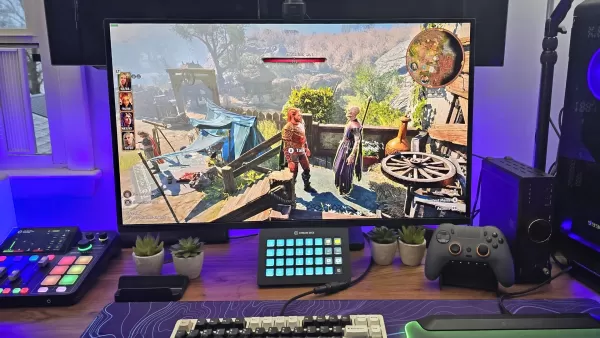
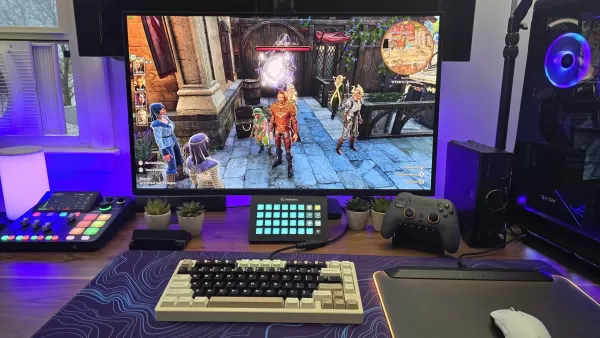 13 Images
13 Images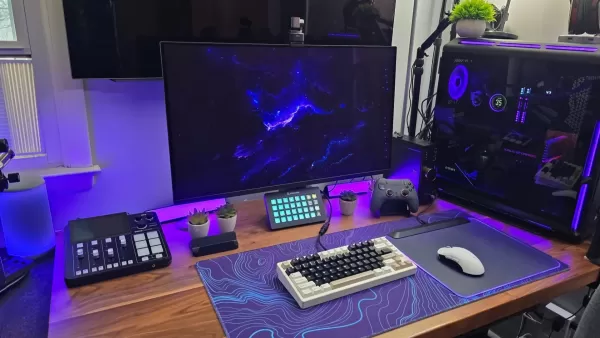


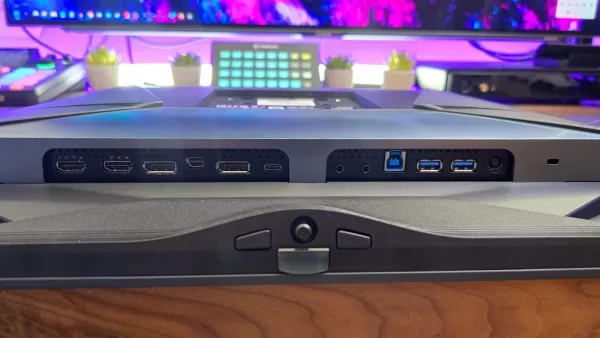 1. Gigabyte FO32U2 Pro
1. Gigabyte FO32U2 Pro
Best Gaming Monitor
 Our Top Pick### Gigabyte FO32U2 Pro
Our Top Pick### Gigabyte FO32U2 Pro
6This stunning monitor delivers on all fronts thanks to its wealth of features and OLED panelSee it at AmazonSee it at NeweggProduct SpecificationsScreen size31.5"Aspect ratio16:9Resolution3840x2160Panel typeOLEDHDR compatibilityHDR TrueBlack 400Brightness1,000 nitsRefresh rate240HzResponse time0.03msInputs2 x HDMI 2.1, 1 x DisplayPort 1.4PROSOutstanding picture qualityExtremely thin panelCONSExpensiveThe Gigabyte FO32U2 Pro exemplifies the potential of OLED technology in gaming monitors. This 32-inch 4K monitor boasts an incredibly thin panel and one of the brightest displays I've tested. While it's on the pricier side, its exceptional quality justifies the investment.
Designed with the future in mind, the FO32U2 Pro supports a 240Hz refresh rate, ensuring it remains relevant even as you upgrade your PC over the years. It even includes support for DisplayPort 2.1, a feature not yet common in current gaming PCs. The OLED panel delivers stunning color accuracy, covering up to 99% of the DCI-P3 color gamut, and with a peak brightness of 1,000 nits and a contrast ratio of 1.5M:1, it brings games, movies, and your desktop to life.
Additionally, it offers practical features like picture-in-picture and an automatic black equalizer. You can fine-tune settings via the Gigabyte Control Center, accessible through a USB connection. This monitor is a premium investment that delivers unparalleled performance and future-proofing.
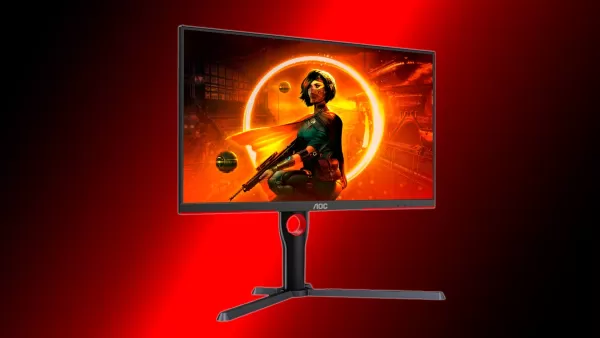 2. AOC Q27G3XMN Mini-LED
2. AOC Q27G3XMN Mini-LED
Best Budget Gaming Monitor
 ### AOCQ27G3XMN Mini-LED Gaming Monitor
### AOCQ27G3XMN Mini-LED Gaming Monitor
0QHD, 1440p, a high refresh rate, and a mini-LED backlight for true HDR?! Scoop up this monitor while the price is still low!See it at AmazonProduct SpecificationsScreen size27"Aspect ratio16:9Resolution2560x1440Panel typeVAHDR compatibilityHDR1000Brightness1,000 nitsRefresh rate180HzResponse time1ms (GTG)Inputs1 x DisplayPort 1.4, 2 x HDMI 2.0, 1 x 3.5mm AudioPROSMini-LED backlight technologyHigh refresh rate for improved responsiveness and decreased motion blurPeak brightness of 1,000 nits for true HDRCONSNo USB connectivityLimited local dimming zonesThe AOC Q27G3XMN offers true HDR gaming at a budget-friendly price, thanks to its mini-LED backlight that provides localized brightness and contrast up to 1,000 nits. This ensures a genuine HDR experience, far beyond the typical "HDR 400" found elsewhere.
Using a VA panel, it delivers superior contrast even with local dimming off. The 336 local dimming zones allow for vivid colors and deep blacks, enhancing your gaming experience without breaking the bank. While it lacks some amenities like USB connectivity, its 27-inch size and 1440p resolution offer crisp visuals and smooth gameplay.
The trade-off for its affordable price is the number of local dimming zones, which can cause noticeable blooming. However, this monitor still provides impressive visuals that outshine many of its competitors, making it a solid choice for budget-conscious gamers.
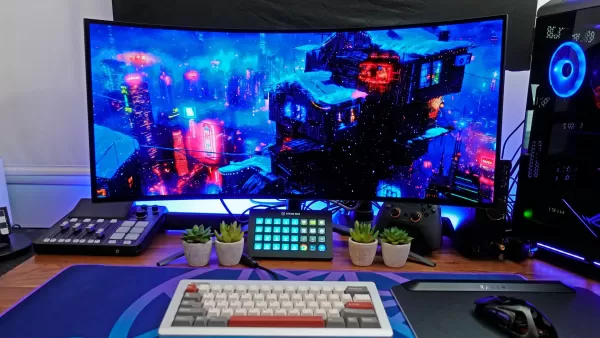 3. Acer Predator X34 OLED
3. Acer Predator X34 OLED
Best Ultrawide Gaming Monitor
 ### Acer Predator X34 OLED
### Acer Predator X34 OLED
0On top of its spacious 34-inch 21:9 display, Acer's Predator X34 OLED checks every box you would hope for from a flagship gaming monitor. See it at AmazonSee it at B&H Product SpecificationsScreen size34Aspect ratio21:9Resolution3440x1440Panel typeOLEDHDR compatibilityVESA DisplayHDR True Black 400Brightness1,300 cd/m2 (peak)Refresh rate240HzResponse time0.03msInputs2 x HDMI 2.1, 1 x DisplayPort 1.4, 2 x USB 3.2 Gen 2 Type-CPROSDeep blacks and bright highlightsRich, engaging colorsExcellent refresh rate and response timeOffers an immersive gaming experience CONSDeep curvature isn't for everyoneOnly reference preset is DCI-P3, not sRGBThe Acer Predator X34 OLED stands out as the top choice for ultrawide gaming in 2025. Its 34-inch 21:9 display delivers an expansive view that enhances immersion. The OLED technology ensures deep blacks, vibrant colors, and a remarkable refresh rate of 240Hz, making it ideal for fast-paced gaming.
The deeply curved 800R display envelops your peripheral vision, creating a highly immersive experience. While this deep curve can cause slight text warping, it's perfect for gaming and adds to the overall experience. With an incredibly fast 0.03ms response time, this monitor excels in responsiveness, offering virtually non-existent input latency.
Despite its peak brightness of 1,300 nits, the lack of an sRGB mode for content creation is a notable omission. However, the DCI-P3 mode provides a solid reference for digital artists.
Alienware AW2725Q - Photos
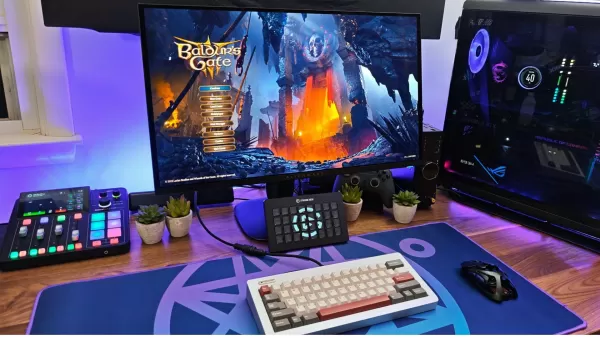
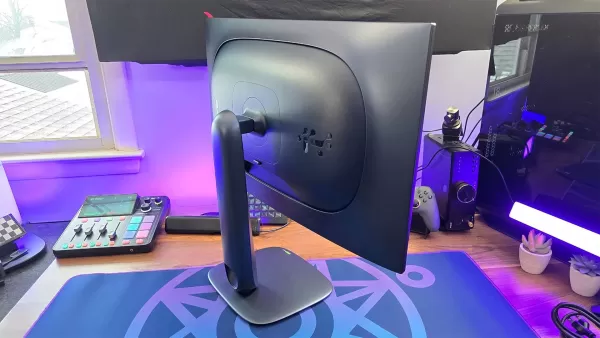 15 Images
15 Images
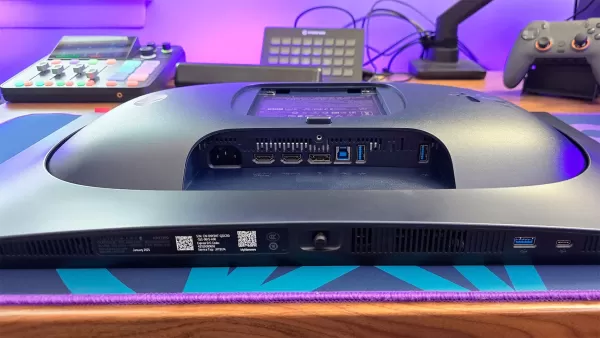
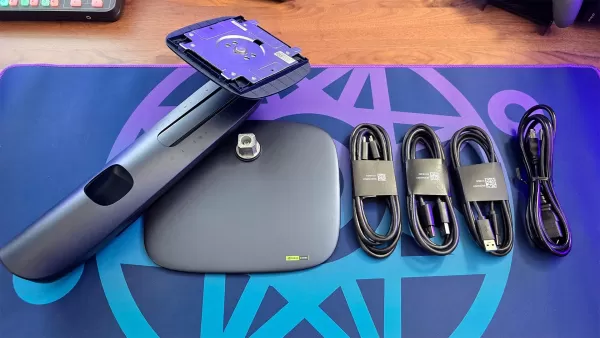
 4. Dell Alienware AW2725Q
4. Dell Alienware AW2725Q
Best 4K Gaming Monitor
 ### Dell Alienware AW2725Q
### Dell Alienware AW2725Q
1Dell'a Alienware AW2725Q manages to feel like a good value among high-end gaming monitors. Its support for Dolby Vision and console-friendly design make it a great choice for those who like to jump between platforms.See it at DellProduct SpecificationsScreen size26.7"Aspect ratio16:9Resolution3840x2160Panel typeQD-OLEDHDR compatibilityVESA DisplayHDR True Black 400Brightness1,000 nitsRefresh rate240HzResponse time0.03msInputs2 x HDMI 2.1, 1 x DisplayPort 1.4, 3 x USB 3.2 Gen 1 Type-A, 1 x USB 3.2 Gen 1 Type-CPROSGorgeous picture with high PPI for improved clarityImpressive color accuracy right out of the boxGood value for what it offersCONSLow SDR brightnessLacks DisplayPort 2.1The Dell Alienware AW2725Q is a top contender for 4K gaming, featuring an upgraded QD-OLED panel and a 240Hz refresh rate. Its sleek design complements any gaming setup, offering a high pixel density of 166PPI for crisp, detailed visuals. The OLED technology ensures outstanding color accuracy and supports VESA DisplayHDR True Black 400 and Dolby Vision HDR for a fantastic gaming and movie-watching experience.
During testing, the monitor's preset modes and calibration options impressed, making it suitable for content creators right out of the box. While its SDR brightness is lower, it reaches 1,000 nits in HDR mode for brilliant highlights. The fast 0.03ms response time paired with the 240Hz refresh rate makes it ideal for competitive gaming.
The absence of DisplayPort 2.1 means it relies on Display Stream Compression to run at full resolution and refresh rate, but this is visually lossless. At its launch price of $899, it offers great value and is likely to become more affordable over time.
Asus ROG Swift OLED PG27AQDP – Photos
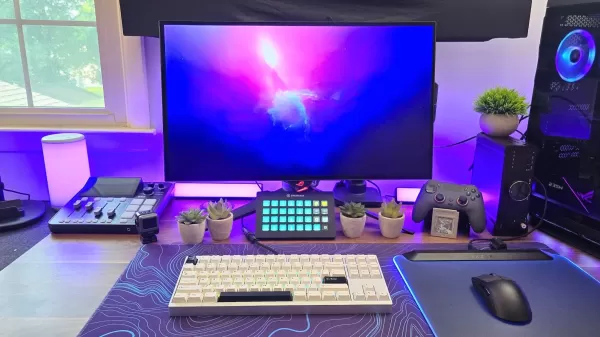
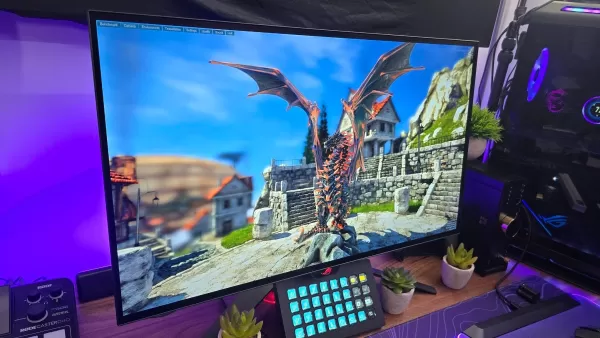 19 Images
19 Images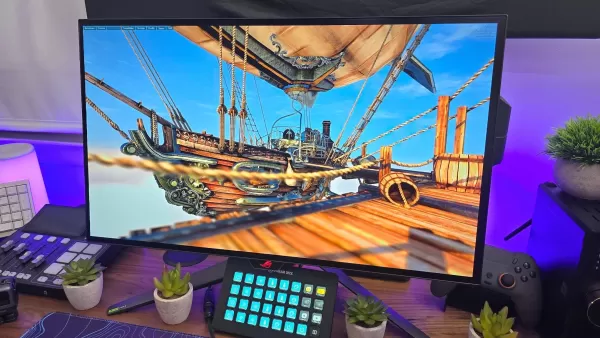
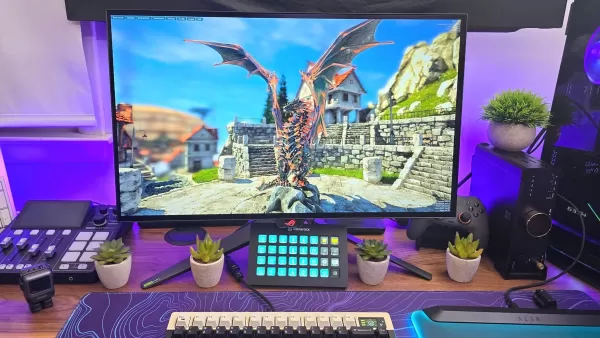
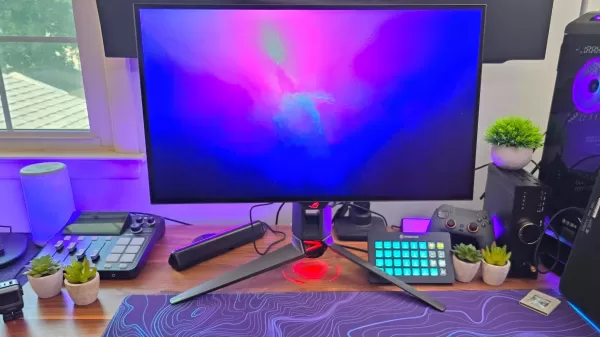
 5. Asus ROG Swift PG27AQDP
5. Asus ROG Swift PG27AQDP
Best 1440p Gaming Monitor
 ### Asus ROG Swift PG27AQDP
### Asus ROG Swift PG27AQDP
0The Asus ROG Swift PG27AQDP is a killer gaming monitor that checks all of the boxes a competitive gamer could want.See it at NeweggProduct SpecificationsScreen size26.5Aspect ratio16:9Resolution2560 x 1440Panel typeOLED FreeSync Premium, G-Sync CompatibleHDRVESA DisplayHDR True Black Brightness1,300 cd/m2 (peak)Refresh rate480HzResponse time 0.03msInputs2 x HDMI 2.1, 1 x DisplayPort 1.4, 2 x USB 3.2 Gen 2 Type-A, HeadphonesPROSPerfectly sized for 1440pCan get exceptionally bright and infinitely dark for great HDRNative 480Hz refresh rateOut of the box color accuracyCONSFew games, outside of esports, will ever hit 480HzThe Asus ROG Swift PG27AQDP is the top choice for 1440p gaming, especially for esports enthusiasts. Its competitive pricing, combined with excellent HDR performance and out-of-the-box color accuracy, makes it a standout option.
The monitor's 480Hz refresh rate is among the fastest available, offering unparalleled smoothness for competitive gaming. The WOLED panel ensures vibrant colors and infinite contrast, delivering a visually stunning experience for both gaming and multimedia content.
Its rapid response time of 0.03ms minimizes motion blur, making it ideal for quick in-game actions. The monitor also includes robust OLED protection features, including pixel shifting, dynamic dimming, and a cooling system to prevent burn-in. Asus offers a three-year warranty with burn-in coverage, adding peace of mind to your purchase.
Despite lacking a KVM switch or USB video input, the PG27AQDP remains a top choice for gamers seeking high performance and reliability.
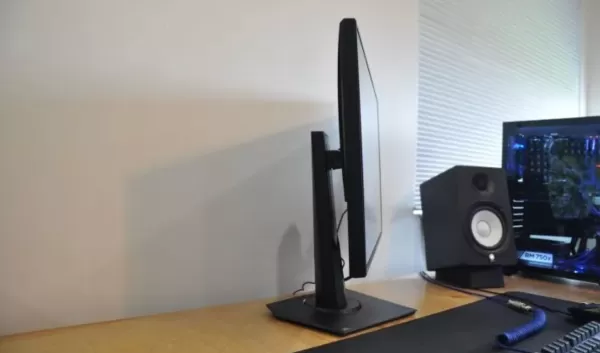 Adjustable stand on the Asus TUF Gaming VG279QM6. Asus TUF Gaming VG279QM
Adjustable stand on the Asus TUF Gaming VG279QM6. Asus TUF Gaming VG279QM
Best 1080p Gaming Monitor
 ### Asus TUF Gaming VG279QM
### Asus TUF Gaming VG279QM
1A 27-inch Full HD display with an overclockable 240Hz refresh rate, low input lag, and adaptive sync for smooth action.See it at AmazonProduct SpecificationsScreen size27"Aspect ratio16:9Resolution1,920 x 1,080Panel typeIPS FreeSync, G-Sync compatibleBrightness400cd/m2Refresh rate240Hz, 280Hz (OC)Response time1ms (GtG)Inputs2 x HDMI 2.0, 1 x DisplayPort 1.2PROSBudget priceExcellent motion handlingCONSSome pixel peepingDespite the popularity of 4K and 1440p monitors, 1080p displays like the Asus TUF Gaming VG279QM still hold a valuable place in the market. Priced under $300, this monitor offers an overclockable 240Hz refresh rate, a one-millisecond response time, and low input lag, ensuring smooth gameplay. Its FreeSync and G-Sync compatibility further enhance the gaming experience by eliminating screen tearing.
The 27-inch screen size is well-suited for 1080p resolution, though some pixel peeping may occur. The IPS panel provides decent color reproduction and viewing angles, and the 400-nit brightness allows use in brighter environments. While it's DisplayHDR 400 certified, its HDR performance is limited due to a mediocre contrast ratio and lack of local dimming.
Additional features include a height-adjustable stand, multiple HDMI and DisplayPort connections, making it a versatile and budget-friendly choice for gamers seeking high performance without breaking the bank.
AnswerSee Results How to Choose a Gaming MonitorWhen selecting a gaming monitor, consider four key factors: screen size, resolution, panel type, and aspect ratio. We'll also delve into technical aspects like refresh rate and variable refresh rate technology to help you make an informed decision.
Screen size: The first question you'll ask is, "How big?" Your answer depends on your setup. Are you in a small space or looking for a monitor that can replace your TV? Measure your space to determine the ideal size. As a guideline, 1080p works well up to 27 inches, 1440p from 27 to 32 inches, and 4K at 32 inches for typical desk use. Larger 43-inch monitors or more are suitable for farther viewing distances.
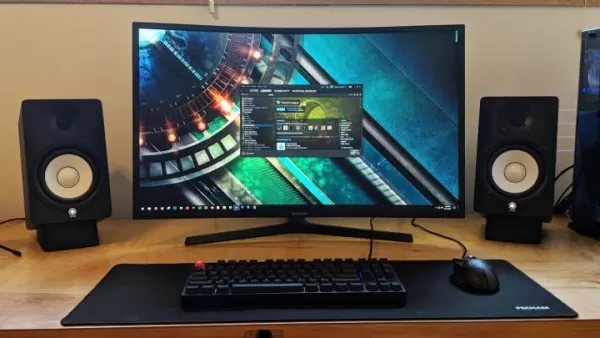 Aspect ratio: This determines the shape of your display. Most monitors are widescreen with a 16:9 aspect ratio. Ultrawide monitors often use a 21:9 ratio, while the latest models may feature a 32:9 ratio for an even wider view.
Aspect ratio: This determines the shape of your display. Most monitors are widescreen with a 16:9 aspect ratio. Ultrawide monitors often use a 21:9 ratio, while the latest models may feature a 32:9 ratio for an even wider view.
Screen resolution: Resolution affects the sharpness of your monitor. Common options include Full HD (1920x1080), Quad HD (2560x1440), and Ultra HD or 4K (3840x2160). Higher resolutions come with higher prices and require more powerful graphics cards for smooth gameplay.
Panel type: Different panel types offer unique advantages. Avoid Twisted Nematic (TN) panels due to their outdated technology. In-Plane Switching (IPS) panels are known for excellent color reproduction and wider viewing angles, with response times typically around 3-5ms. Vertical Alignment (VA) panels balance image quality and response time but may exhibit ghosting. Mini-LED backlighting enhances brightness and local dimming but can cause blooming. OLED monitors offer the best contrast and HDR experience, though they require careful use to prevent burn-in.
 Response time: Competitive gaming demands quick response times, ideally 1ms. For single-player and indie games, 3-5ms is sufficient. OLED panels offer the fastest response times, around 0.03ms, providing minimal input latency when paired with high refresh rates.
Response time: Competitive gaming demands quick response times, ideally 1ms. For single-player and indie games, 3-5ms is sufficient. OLED panels offer the fastest response times, around 0.03ms, providing minimal input latency when paired with high refresh rates.
Refresh rate: This indicates how often your screen refreshes per second. Standard rates are 60Hz, but gaming monitors can reach 120Hz, 144Hz, 240Hz, 360Hz, or even 500Hz. Higher refresh rates result in smoother gameplay, essential for competitive gaming.
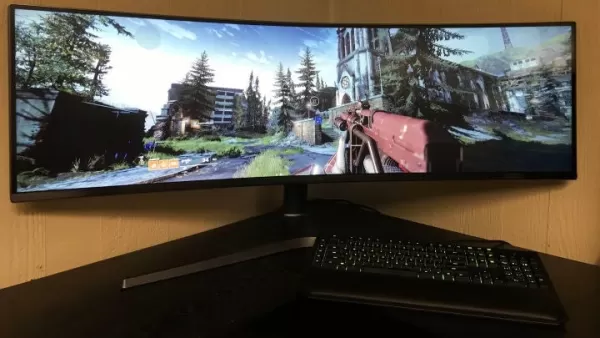 G-Sync vs FreeSync: Variable refresh rate (VRR) technology ensures smooth gameplay by syncing your monitor's refresh rate with your GPU's frame output, preventing screen tearing. Nvidia's G-Sync and AMD's FreeSync are the two main VRR options, each requiring a compatible graphics card. Nvidia cards can use FreeSync monitors, but performance may vary.
G-Sync vs FreeSync: Variable refresh rate (VRR) technology ensures smooth gameplay by syncing your monitor's refresh rate with your GPU's frame output, preventing screen tearing. Nvidia's G-Sync and AMD's FreeSync are the two main VRR options, each requiring a compatible graphics card. Nvidia cards can use FreeSync monitors, but performance may vary.
Ensure your graphics card can handle the resolution and refresh rate of your chosen monitor to avoid wasting money on underutilized hardware.
Gaming Monitor vs. Gaming TV: Which Is Best for You?
Choosing between a gaming monitor and a gaming TV depends on your preferences and gaming style. For a larger screen experience, gaming TVs with OLED or mini-LED technology offer superior brightness, contrast, and color, often at a lower cost than comparable gaming monitors.
However, gaming monitors excel in performance with lower input lag, higher refresh rates, and better pixel response times. Most monitors offer refresh rates above 120Hz, with some reaching 360Hz or 500Hz, and often include VRR technology. Gaming TVs typically max out at 60Hz or 120Hz, with VRR support varying.
Monitors also provide better value, with budget options offering high refresh rates and adaptive sync. Gaming TVs around the same price often lack these features, and even budget gaming TVs can be more expensive with limited gaming capabilities.
Size is another consideration. Gaming monitors over 43 inches are rare, making gaming TVs a better choice for couch gaming. Large monitors at your desk enhance immersion but require careful positioning. Gaming TVs often lack adjustable stands, necessitating monitor arms or wall mounts.
Using a large monitor for productivity can boost multitasking, but be mindful of burn-in risks on OLED TVs without standby modes.
Gaming Monitor FAQ
What's the difference between Nvidia G-Sync and AMD FreeSync?
AMD FreeSync and Nvidia G-Sync both use VRR technology to synchronize your display's refresh rate with your GPU's frame rate, preventing screen tearing. Both adhere to the VESA Adaptive-Sync standard, and most FreeSync displays work with G-Sync-compatible Nvidia cards.
Nvidia offers G-Sync Compatible, G-Sync, and G-Sync Ultimate tiers. G-Sync Compatible monitors work with Nvidia cards without special hardware, while G-Sync and G-Sync Ultimate offer more advanced adaptive sync and additional features like HDR.
AMD's tiers include FreeSync, FreeSync Premium, and FreeSync Premium Pro. FreeSync Premium adds Low Framerate Compensation, and FreeSync Premium Pro supports HDR and guarantees a 120Hz refresh rate with low latency.
What’s the best resolution for a gaming monitor?
The best resolution depends on your needs. For high refresh rates and budget-friendly options, 1080p is ideal. For sharper visuals, 4K monitors are perfect for 27-inch or larger screens, though they require powerful hardware. 1440p offers a balance between resolution and performance, suitable for competitive gaming with a mid-range graphics card.
Is HDR worth it?
HDR enhances color, brightness, and contrast, making games more vibrant and detailed. True HDR starts at 1000 nits of peak brightness, though monitors above 600 nits can still offer improved visuals. OLED and mini-LED panels deliver the best HDR experience, while many monitors claiming HDR support fall short. Check our guide on HDR for more information.
When is the best time to get a gaming monitor?
Gaming monitors can be pricey, so consider shopping during major sales like Amazon Prime Day, Black Friday, or Cyber Monday. Also, keep an eye on new monitor releases from brands like Asus or Dell, as older models often go on sale.
-
1

GTA 6 Set for Fall 2025 Release, CEO Confirms
Apr 03,2025
-
2

First ALGS in Asia Emerges in Japan
Jan 19,2025
-
3

Introducing the Ultimate Guide to Seamless Character Swapping in Dynasty Warriors: Origins
Feb 25,2025
-
4

Roblox: CrossBlox Codes (January 2025)
Mar 04,2025
-
5
![Roblox Forsaken Characters Tier List [UPDATED] (2025)](https://img.jdzca.com/uploads/18/17380116246797f3e8a8a39.jpg)
Roblox Forsaken Characters Tier List [UPDATED] (2025)
Mar 05,2025
-
6

Max Hunter Rank in Monster Hunter Wilds: Tips to Increase
Apr 04,2025
-
7

Cute mobs in Minecraft: pink pigs and why they are needed
Mar 06,2025
-
8

Capcom Spotlight Feb 2025 Showcases Monster Hunter Wilds, Onimusha and More
Apr 01,2025
-
9
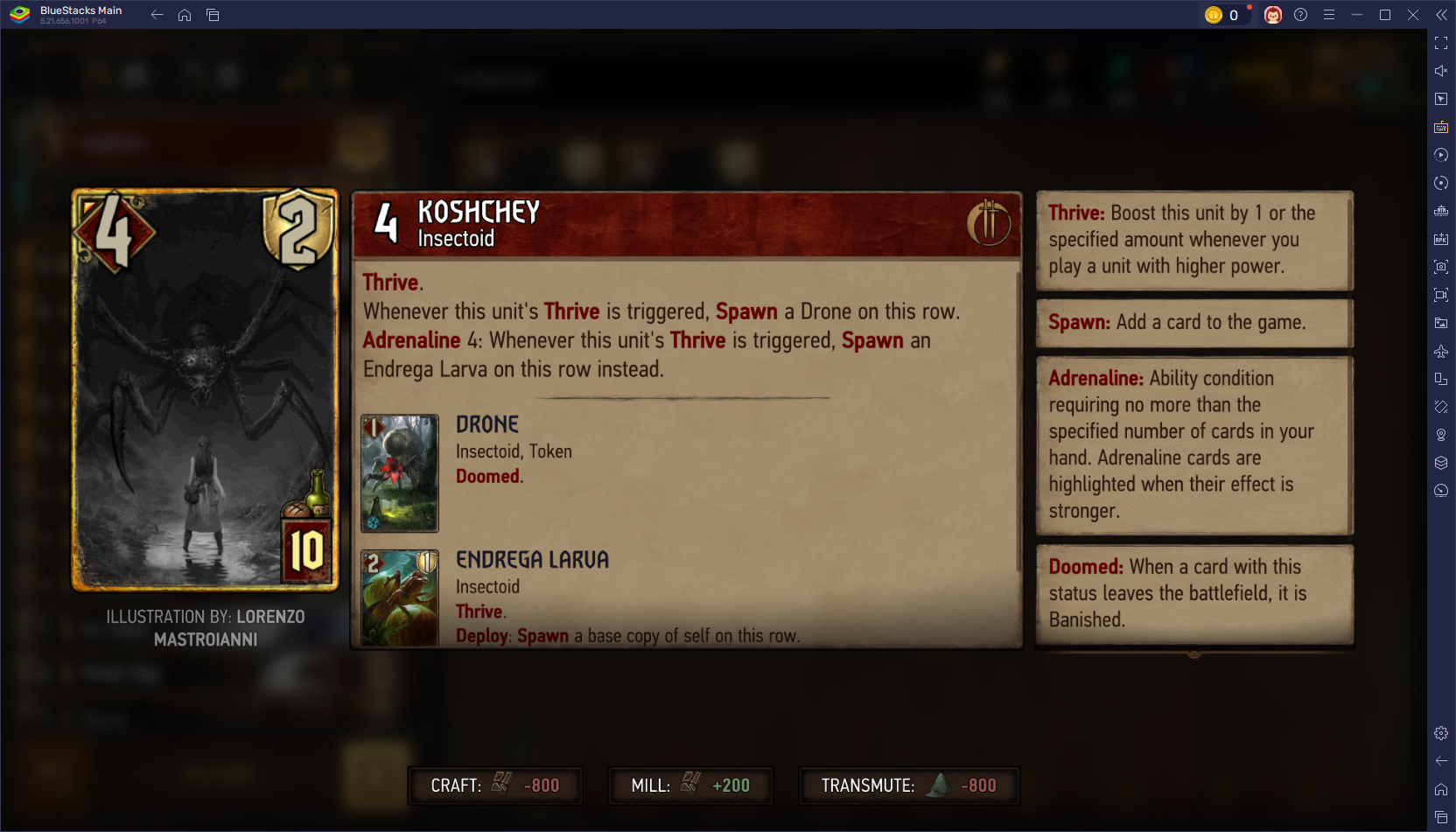
Gwent: Top 5 Witcher Decks (2025 Update)
Mar 13,2025
-
10
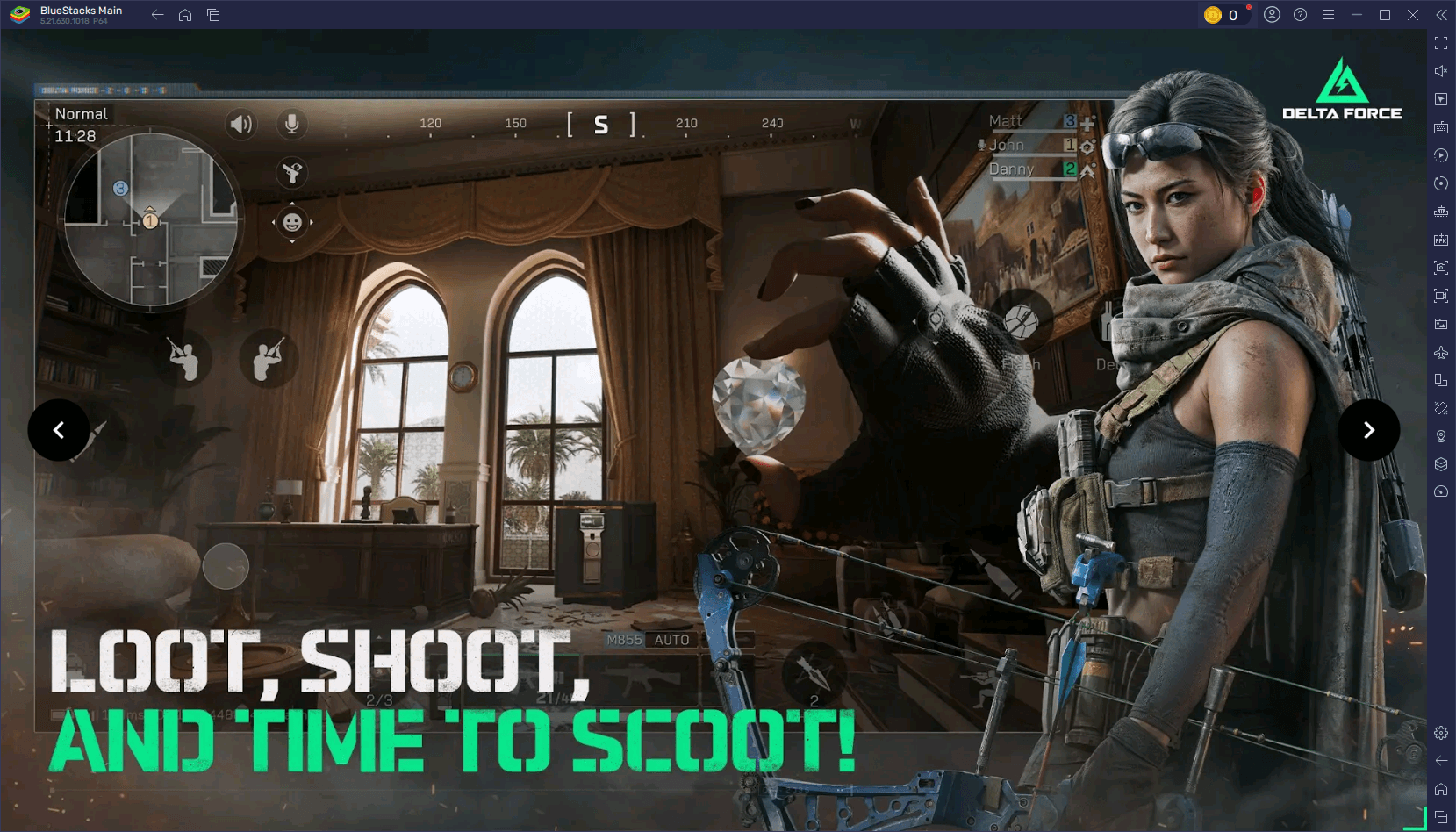
Delta Force Mobile: Beginner's Guide to Getting Started
Apr 23,2025
-
Download

Portrait Sketch
Photography / 37.12M
Update: Dec 17,2024
-
Download

Friendship with Benefits
Casual / 150.32M
Update: Dec 13,2024
-
Download
![[NSFW 18+] Sissy Trainer](https://img.jdzca.com/uploads/16/1719638919667f9b874d57e.png)
[NSFW 18+] Sissy Trainer
Casual / 36.00M
Update: Dec 11,2024
-
4
F.I.L.F. 2
-
5
슬롯 마카오 카지노 - 정말 재미나는 리얼 슬롯머신
-
6
Pocket Touch Simulation! for
-
7
Shuffles by Pinterest
-
8
Life with a College Girl
-
9
Chubby Story [v1.4.2] (Localizations)
-
10
Hunter Akuna














